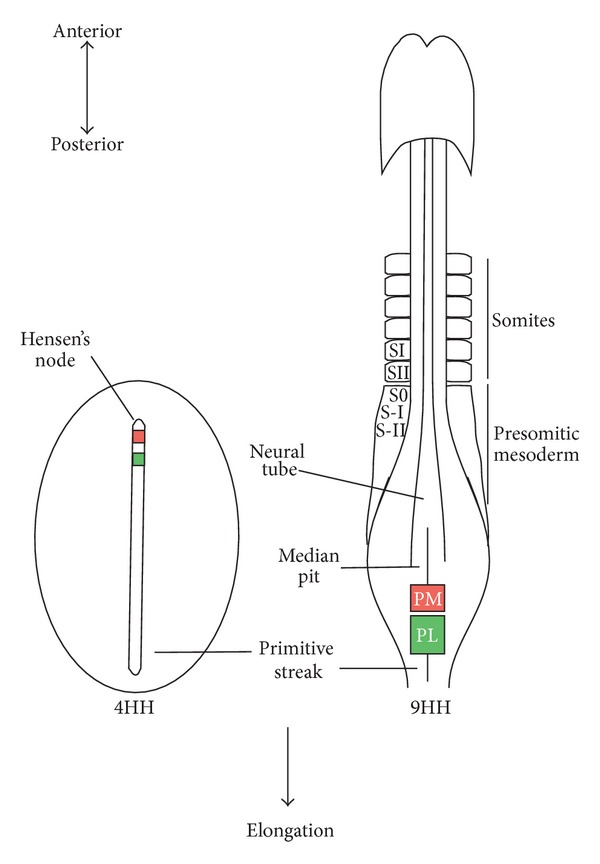Figure 1.

Segmentation of the chick embryo. Schematic representation of two distinct development stages of the chick embryo (dorsal view, 4HH and 9HH [2]). Hensen's node organizer is visible at the anterior tip of the fully extended primitive streak at stage 4HH. As Hensen's node regresses caudally, anterior structures are laid down as gastrulation occurs in the posterior part of the embryo. Consequently, embryonic structures are formed in a head-to-tail fashion and a clear anterior-posterior gradient of differentiation is observed, as depicted in the 9HH embryo. At this stage, a pair of somites is formed from the anterior portion of the presomitic mesoderm flanking the axial neural tube and notochord every 90 minutes. Somites are numbered according to their maturity along the A-P axis: the forming somite is designated S0, and the following presumptive ones are denoted in negative numerals (S-I, S-II, etc.) whereas segmented somites are represented with positive numerals, with SI being the most recently formed somite [30, 31]. Concomitant with somitogenesis, the embryo elongates due to the continuous contribution of new cells from the tail-bud region until the final number of somites is reached. The localization of the prospective PSM territories, medial (PM, pink) and lateral (PL, green), is indicated in both stages.
